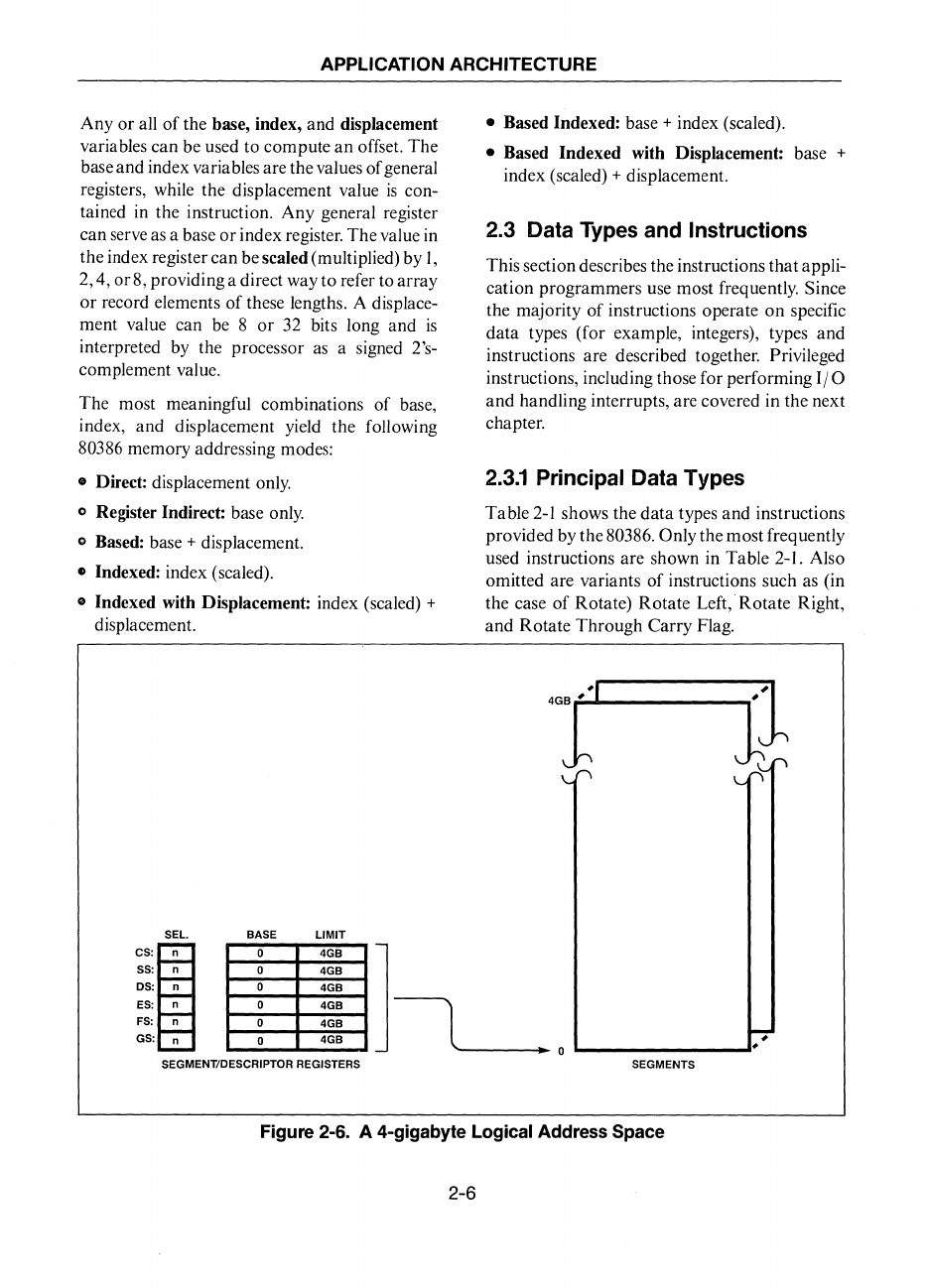
APPLICATION ARCHITECTURE
Any or all of the base, index, and displacement
variables can be used to compute
an
offset. The
base and index variables are the values of general
registers, while the displacement value
is
con-
tained in the instruction. Any general register
can serve as a base or index register. The value in
the index register can be scaled (mUltiplied) by
I,
2,4,
or
8,
providing a direct way to refer to array
or
record elements of these lengths. A displace-
ment value can be 8
or
32 bits long and
is
interpreted by the processor
as
a signed 2's-
complement value.
The most meaningful combinations
of
base,
index, and displacement yield the following
80386 memory addressing modes:
• Direct: displacement
only.
o Register Indirect: base
only.
o Based: base + displacement.
• Indexed: index (scaled).
• Indexed with Displacement: index (scaled) +
displacement.
SEL. BASE
LIMIT
• Based Indexed: base + index (scaled).
• Based Indexed with Displacement: base +
index (scaled) + displacement.
2.3 Data Types and Instructions
This section describes the instructions that appli-
cation programmers use most frequently. Since
the majority
of
instructions operate
on
specific
data types (for example, integers), types and
instructions are described together. Privileged
instructions, including those for performing
1/0
and handling interrupts, are covered in the next
chapter.
2.3.1
Principal Data Types
Table
2-1
shows the data types and instructions
provided by the 80386.
Only the most frequently
used instructions are shown in Table 2-1. Also
omitted are variants of instructions such as (in
the case of Rotate) Rotate
Left,"Rotate Right,
and Rotate Through Carry Flag.
4GB #
#1
b
"I
0 4GB
l~.
SS: n
4GB
OS:
n
4GB
ES: n
0
4GB
FS: n
4GB
GS: n
0
4GB
1-7
#
SEGMENT/DESCRIPTOR REGISTERS SEGMENTS
Figure 2-6. A 4-gigabyte Logical Address Space
2-6


















